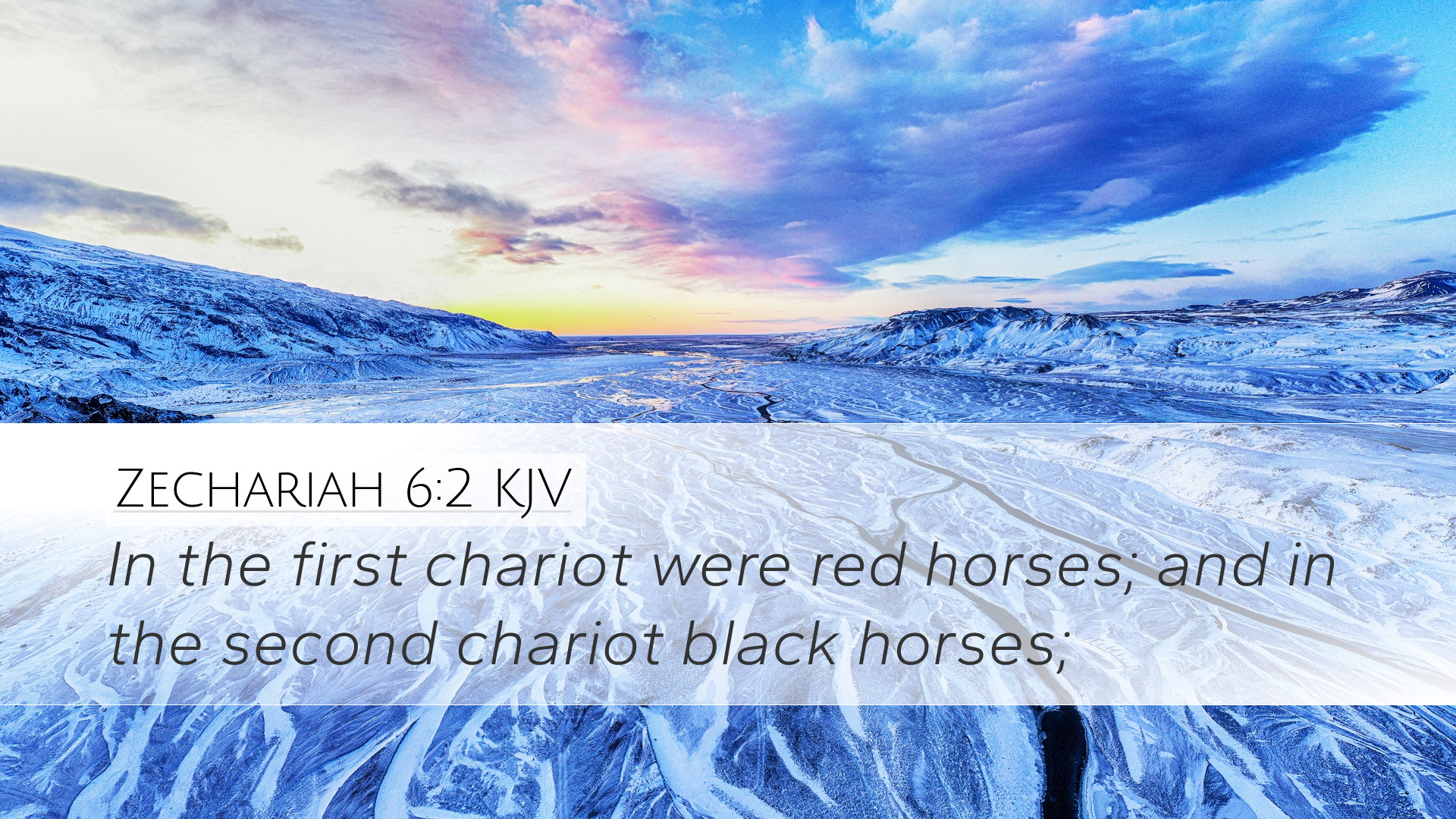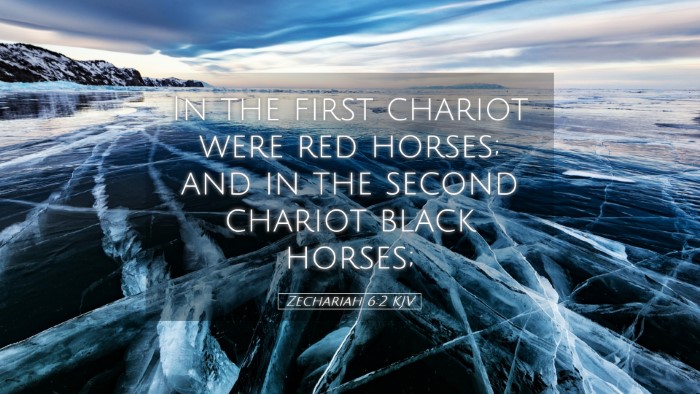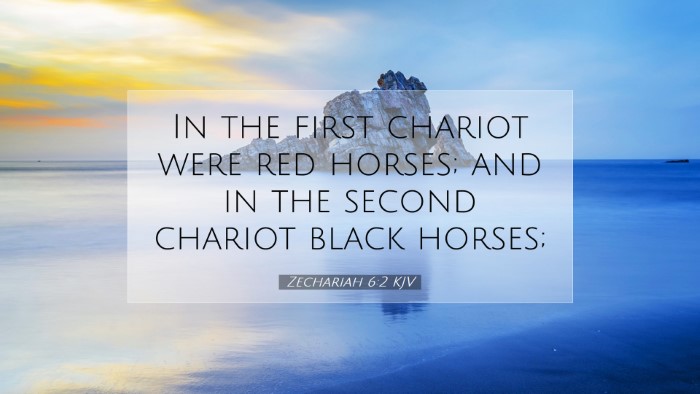Old Testament
Genesis Exodus Leviticus Numbers Deuteronomy Joshua Judges Ruth 1 Samuel 2 Samuel 1 Kings 2 Kings 1 Chronicles 2 Chronicles Ezra Nehemiah Esther Job Psalms Proverbs Ecclesiastes Song of Solomon Isaiah Jeremiah Lamentations Ezekiel Daniel Hosea Joel Amos Obadiah Jonah Micah Nahum Habakkuk Zephaniah Haggai Zechariah MalachiZechariah 6:2
Zechariah 6:2 KJV
In the first chariot were red horses; and in the second chariot black horses;
Zechariah 6:2 Bible Commentary
Commentary on Zechariah 6:2
Zechariah 6:2 presents a profound vision that offers rich theological insights into the nature of divine authority, judgment, and the ultimate hope of Israel. This verse encapsulates a critical moment in the prophetic narrative where Zechariah encounters a symbolic representation of God's sovereignty and the coming restoration of His people. Below is a detailed commentary synthesized from public domain works such as those by Matthew Henry, Albert Barnes, and Adam Clarke.
Text of Zechariah 6:2
"In the first chariot were red horses; and in the second chariot black horses."
Introduction to the Vision
In this vision, Zechariah is presented with four chariots emerging from between two mountains of brass, symbolizing the might and majesty of God’s judgment. The chariots each carry a unique set of horses, which represent different forces or judgments unleashed by God upon the earth.
Contextual Background
- Historical Context: The book of Zechariah is situated in the post-exilic period, where the Israelites were returning from Babylonian captivity. The challenges of rebuilding the temple and their national identity are central themes.
- Prophetic Purpose: The visions provided to Zechariah were intended to reassure the Jewish people of God’s presence and His continued promise of restoration.
Analysis of the Horses and Chariots
The chariots and horses in Zechariah's vision symbolize various aspects of God’s judgment and divine agency. The specific colors of the horses signal different prophetic messages.
Red Horses
Symbolism: Red horses are often associated with bloodshed and conflict. This aligns with biblical instances where red symbolizes war and blood, hinting at the judgment and strife that can arise as God enacts His will among the nations.
Theological Insight: Matthew Henry notes that the presence of the red horses may signify the assurance that God recognizes the plight of His people amidst turmoil and strife. It reflects God’s sovereignty over conflicts.
Black Horses
Symbolism: Black horses traditionally represent famine and darkness. Adam Clarke comments on how the blackness of these horses can be understood as devastation resulting from the consequences of sin. It may signal the ongoing struggles of the people and the divine judgment against sinfulness.
Pastoral Insight: For pastors and theologians, engaging with this imagery reminds congregations of the serious consequences of turning away from God. It calls for introspection in communal and individual spiritual lives.
Key Theological Themes
- Divine Justice: The chariots symbolize God’s control over the affairs of mankind, demonstrating that He administers justice according to His righteous standards.
- Hope and Restoration: While the presence of these horses suggests judgment, it also hints at God’s larger redemptive plan, assuring the faithful of His ultimate deliverance.
- The Role of the Prophet: Zechariah, as a prophet, serves as a crucial mediator between God and His people, conveying divine truths and encouraging faithfulness during trying times.
Application for Contemporary Readers
This passage encourages contemporary believers to understand that God remains sovereign and actively involved in the world’s affairs. It invites reflection on personal faith and the corporate witness of the church in facing modern challenges.
For Pastors:
Pastors may draw on this text to remind their congregations of the reality of God’s judgment and the importance of remaining steadfast in faith amidst societal turmoil.
For Students and Scholars:
Students of theology might explore the implications of God’s justice as represented in works of literature and art, as well as historical contexts of judgment throughout biblical history.
Conclusion
In summary, Zechariah 6:2 serves as a powerful reminder of God’s sovereignty over the forces of judgment and His enduring promise of hope to His people. The chariots and their horses symbolize the complexities of divine intervention in human affairs, making this vision relevant to both ancient Israel and contemporary believers.
Final Thought: As we examine the lessons from this verse, may we be inspired to trust in God’s unrivaled power and faithfulness, holding fast to the hope of restoration as we navigate the complexities of our world.


